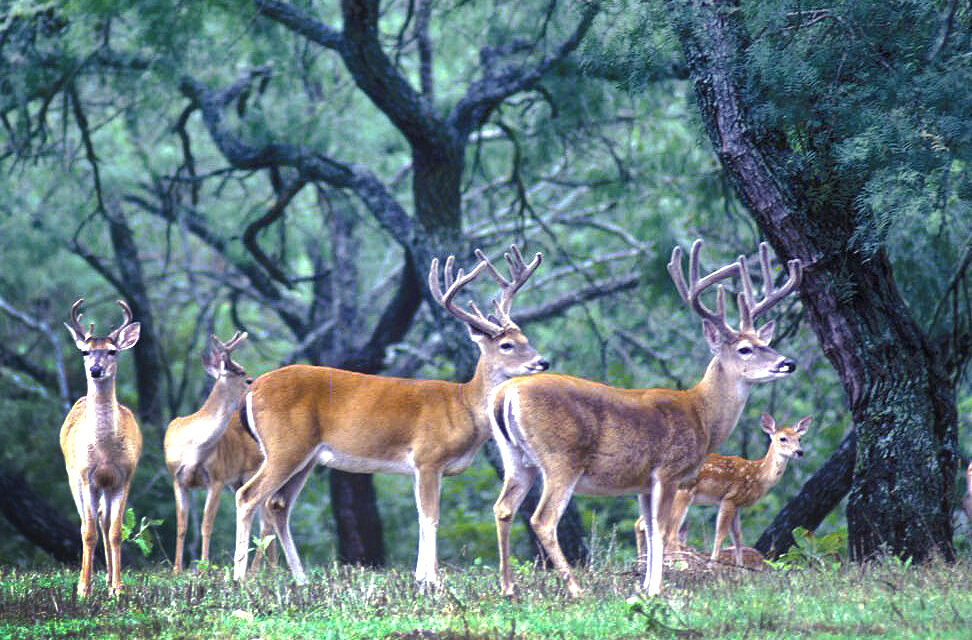by John Jefferson
Texas Parks and Wildlife’s press release last week predicted an “exceptional white-tailed deer season this fall.” It quoted my friend, Blaise Korzekwa, TPWD’s Big Game Program Leader, as saying over half the state had excellent habitat conditions.
I spoke with Blaise and got more specific information.
Good habitat conditions are critical to a healthy deer herd. And since most deer hunters are interested in antler production, habitat quality must exist in the spring. Deer managers and most hunters know that whitetails usually lose their antlers in late winter. There are exceptions, and I recall a time around the late ‘60s when deer started dropping their antlers in December, frustrating hunters.
As soon as antlers hit the ground each year, new ones begin to form. And that’s when a healthy habitat becomes critical. Proper nourishment provides protein needed for antler growth. With enough, antlers can be superb. During a spring drought, antlers will still develop but could be merely average. Remember: this is Texas; average antlers here can still be remarkable to many hunters.
Last winter was fairly mild compared to the two previous years’ ice and snow-filled weather. (Our utilities didn’t even get shut off last February!) And deer could find the needed woody forbs to maintain fairly good health as they began recovering from the stress of breeding season … poor guys. They were in better shape than most years. Nutritional intake could flow more to antlers than to recovering a well-spent body, which is what often occurs.
Springtime rains began falling on much of Texas at the right time, revitalizing plants that would deliver the needed protein for antler development. That made a difference.
I asked Korzekwa if there were any areas that stood out as probably having unusually fine antlers, and some that would be merely average. He jumped on that!
He indicated that two areas in the central part of the state that received good rains were east of I-35 and another west of Fort Worth. Having received more spring rain than the previous two years and, coupled with several years of good fawn crops, hunters in those areas could see more “wall hangers” this season.
The area west of Fort Worth received rain on many ranches, but it didn’t fall on the entire area, as mentioned previously about quail and rain. Deer, however, move more to well-watered habitats than quail do, so probably benefited more than the little less-travelled birds.
Blaise told me the Pineywoods and Post Oak regions had good rains and has improved age classes being harvested. Last seasons’ locker plant surveys showed 65 to 75% of bucks were 3.5 years-old or older. Antler restrictions and several years of good fawn recruitment there have helped.
Some of South Texas missed the rains, but better managed ranches and rich, natural habitat help offset that.
But the Hill Country area around Kerrville missed much of the rains and drought has affected nutrition. Again, well-managed ranches will fare better than others in this heavily hunted region.
JJ




